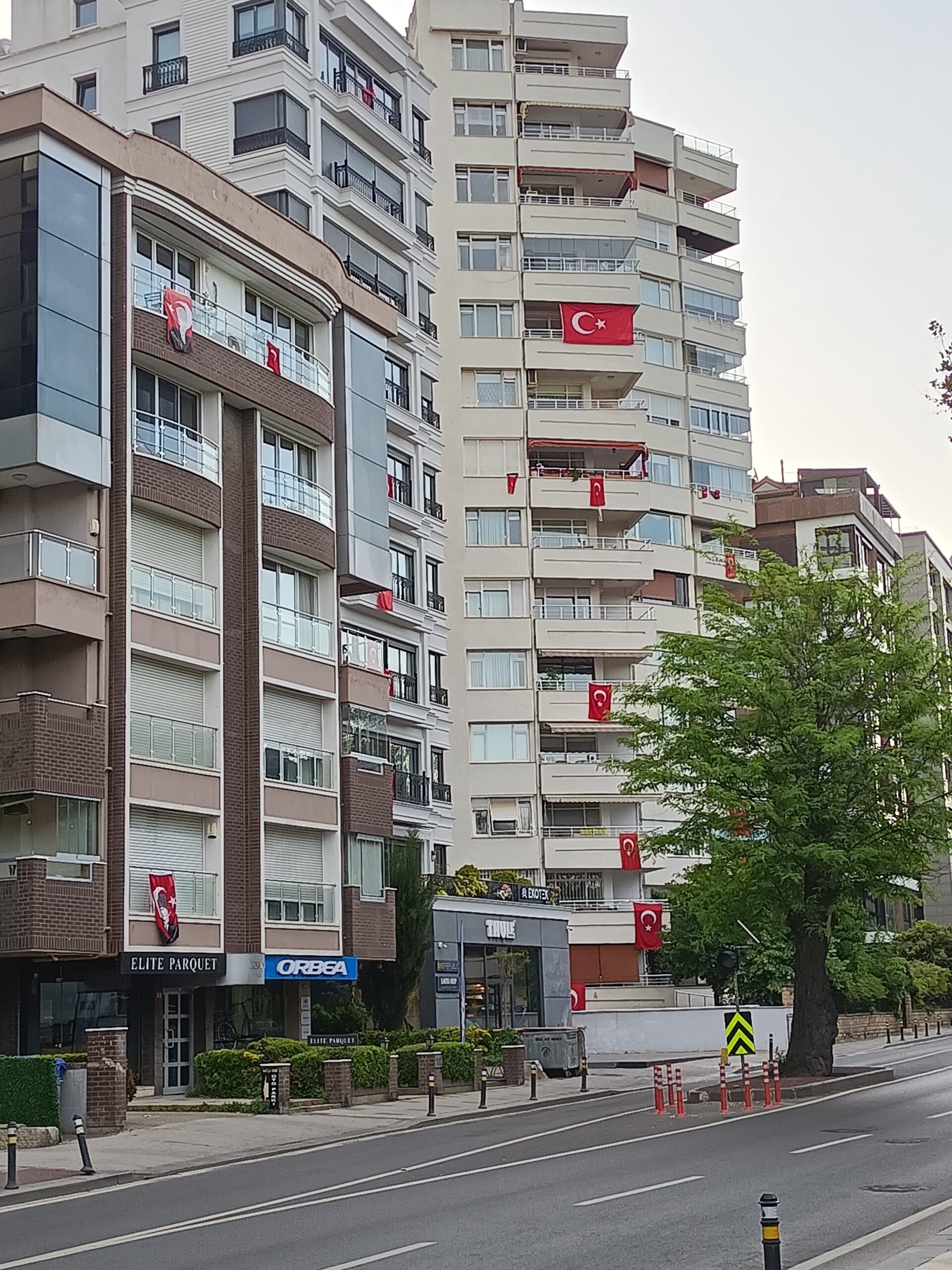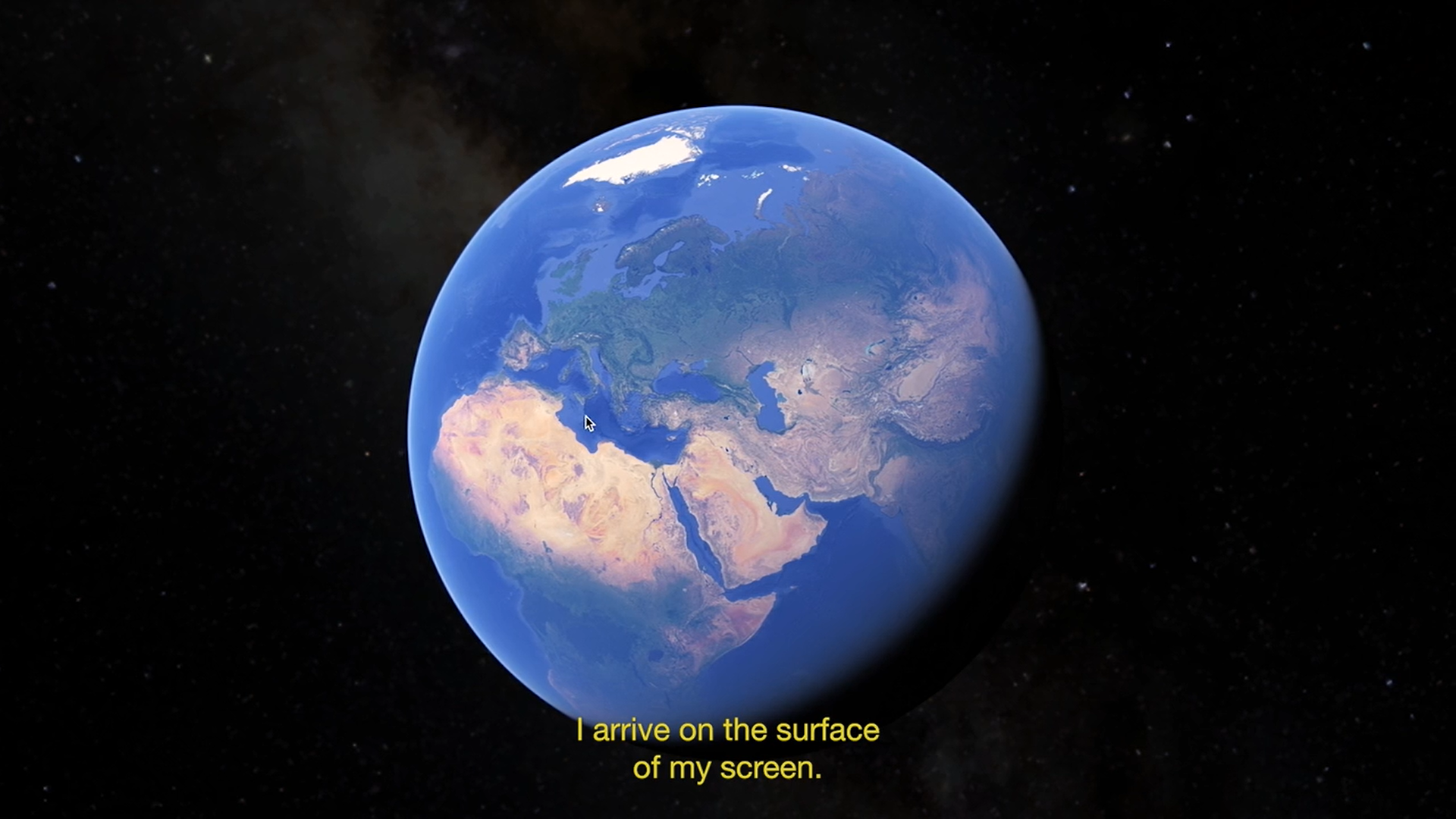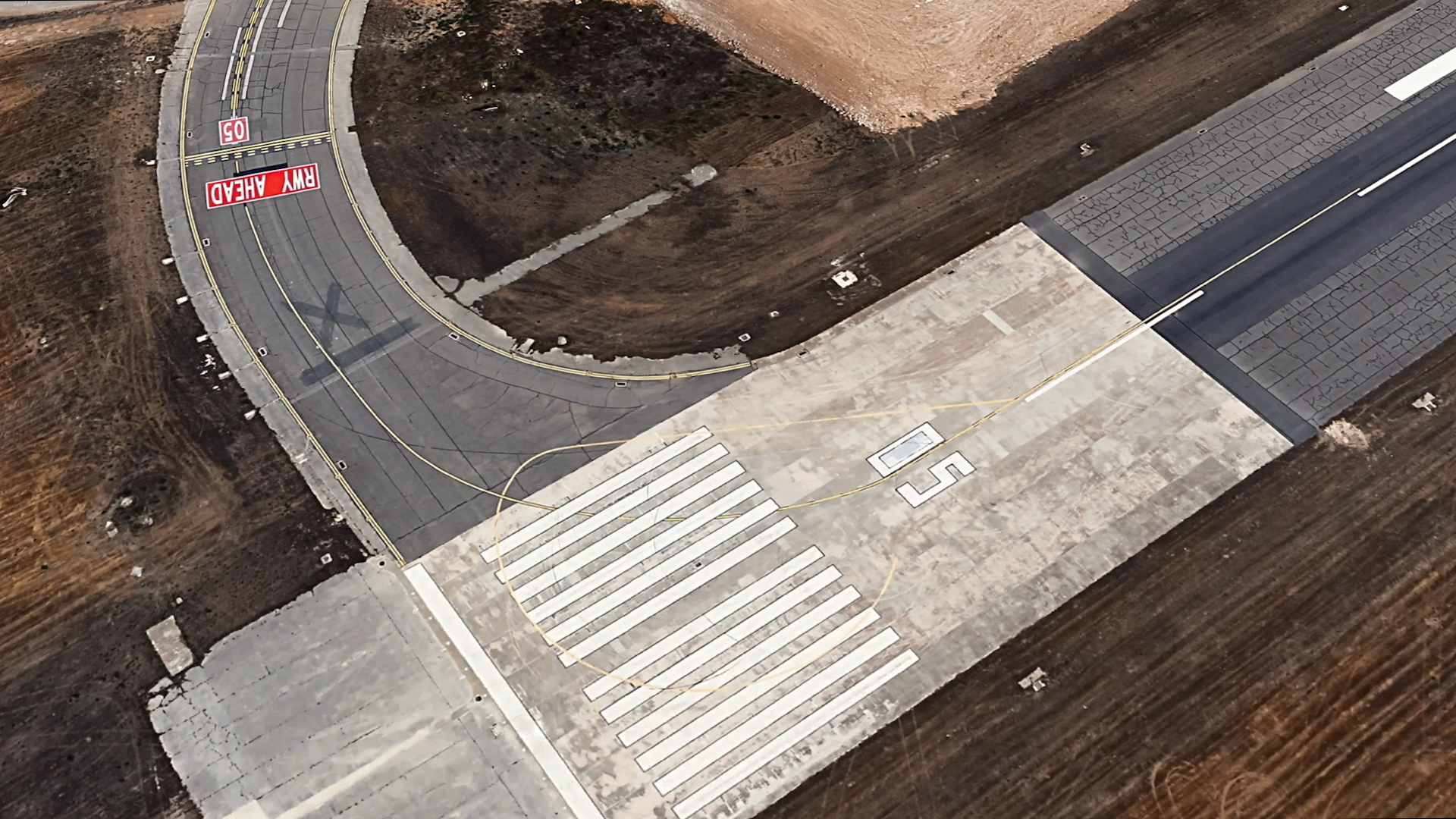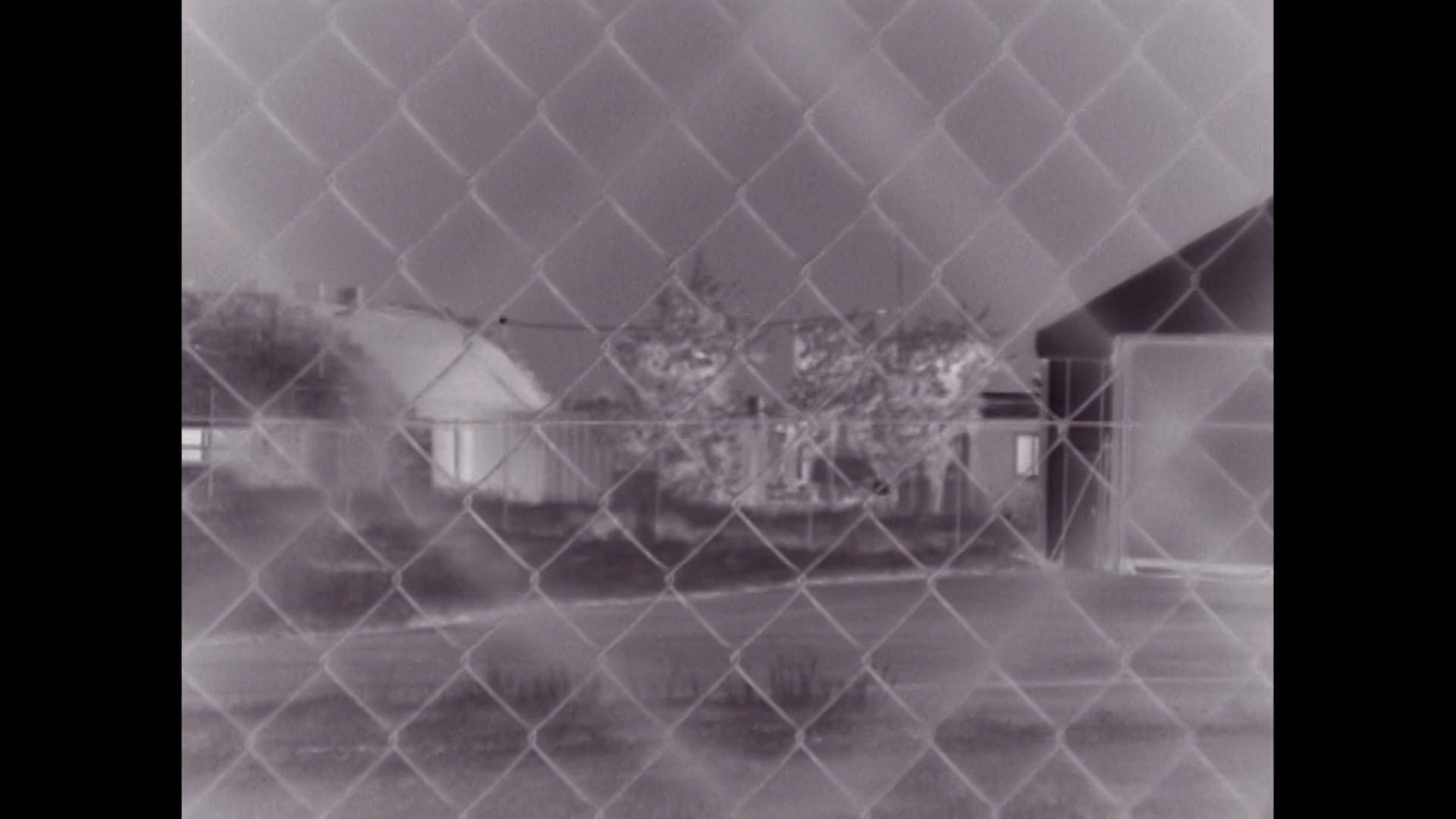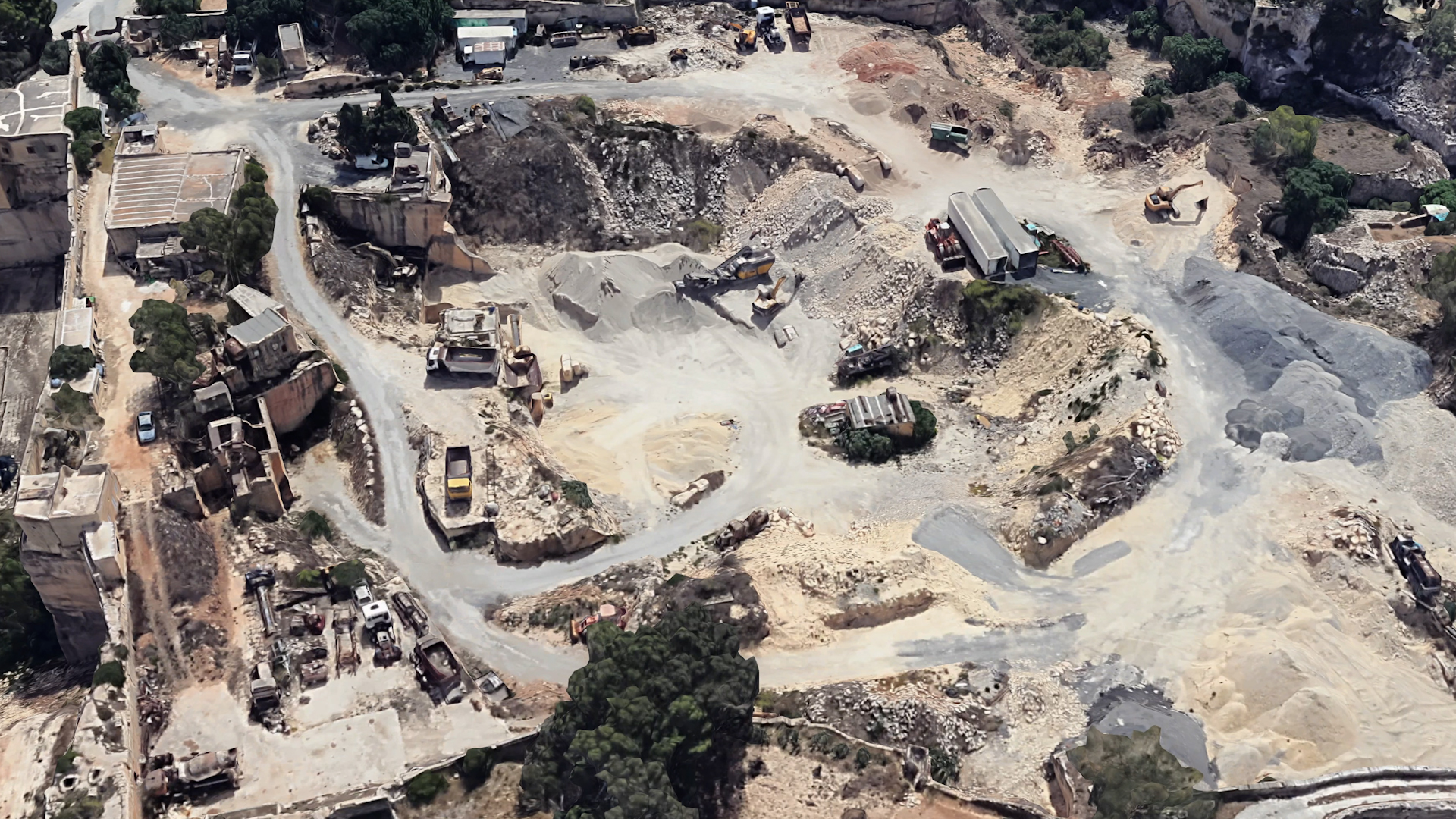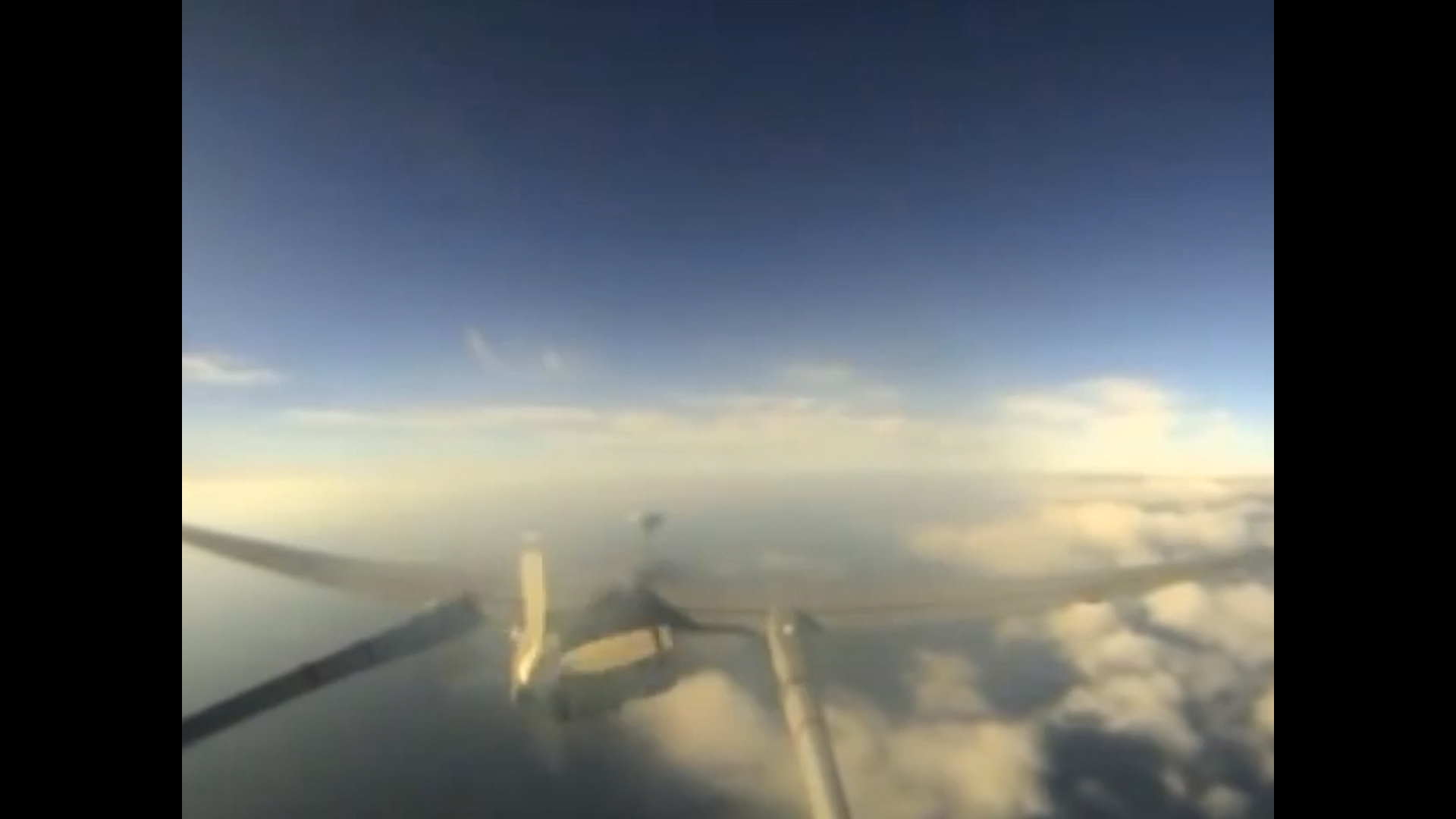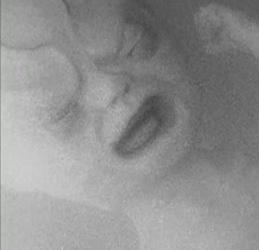Stefan Kruse (V. O.)
Description of a Struggle. On 'A Reconnaissance'
Foreword. Global warfare and media-guerilla
From May 7 to 11, the Istanbul Experimental festival broadcast the latest news from a long-running “media guerilla.” I’ll borrow this grandiloquent term from the Austrian group Total Refusal, which made a name for itself through pseudo-Marxist machinima films (How to Disappear, 2020, Hardly Working, 2022). Two of its sympathetic representatives (Susanna Flock and Michael Stumpf) took advantage of the retrospective dedicated to them in Istanbul to propose a conference with a prospective tone: What future for the “media guerilla”?
In 2020, How to Disappear laid the foundations for a counter-hegemonic practice of video games. Shot entirely on the set of Battlefield V, it used Situationist humor to reveal the ideological underpinnings of its gameplay. Its realistic framing (supposed to be indefinitely extendable), banged up against the limits of the battlefield, a horizon simulation forever unreachable: “The landscape appears to be endless, but actually it’s a flat and empty backdrop, a stage picture to the shooting.” No way out for deserters. Desertion cannot be played.
There’s no doubt that video games, among other cultural forms, have contributed to preparing our minds for the prevailing militarism. But contrary to the usual paternalistic criticism, which focuses on ultra-violence and addiction, Total Refusal suggests another, more empathetic path, since it implies experiencing games and their gameplay, starting with the most popular releases. Media-guerilla gains ground on war games whenever it manages to denaturalize, even slightly, the ideological, individualistic, anti-feminist and anti-democratic ideas on which they are based. The collective’s current research on Tom Clancy’s: The Division 2 takes the form of a stroll down Pennsylvania Avenue, from the Capitol to the White House, to examine the points of tension between capitalism and American democracy. According to the collective, this shooter anticipated the attacks on the Capitol in January 2021.
Here, a few elements of context are worth recalling. At the time I was listening to Total Refusal in the central district of Beyoğlu, the waves of protest sparked by the arrest of Istanbul’s mayor, Ekrem İmamoğlu, were wearing thin from facing a violent and continuous repression. Festival organizers told me that these events had monopolized the energy of students, who usually make up a large part of the audience and volunteer team. The festival was relatively depopulated.
Outside, Turkish flags, sometimes flanked by the portrait of Mustafa Kemal (Atatürk, founding father of the Republic of Turkey), had been flying for weeks in every corner of the city, hanging from balconies. Rather than a chauvinist symbol, this was an unstoppable way for Stamboulians to challenge the mayor’s arrest, without exposing themselves to direct repression (for what leader would ban his own nation’s flag?).
Experiencing a festival is always about making connections, not only between films, but also between the theater and the outside world. The opening film, At All Hours and None (Davide Minotti and Valeria Miracapillo, 2023), portrayed Aslı Erdoğan, an author, physicist, activist and former political prisoner in Turkey, now living in exile in Berlin. In the set of images of Erdoğan’s life, hybridized by a surprising profusion of processes (from surrealist handmade collage to digital glitch), images of the 2013 Gezi Park riots, during which the author was arrested, revived in people’s minds recent riots.
Common sense assumes a difference in nature between wars like the ones in Battlefield V, waged on populations abroad, and the state repression shown in At All Hours and None, waged against the population at home. This difference is losing its obviousness today, as external and internal violence merge spectacularly into a “global war on peoples[11][11] Mathieu Rigouste, La guerre globale contre les peuples. Mécanique impériale de l’ordre sécuritaire, La Fabrique, 2025”. This is true of Turkey as well as it is of France, where I’m writing from. But it’s even more true of spaces that we cannot tell whether they are internal or external, local enclaves of this global militarization.
It is from such a space that Stefan Kruse’s latest film, A Reconnaissance, questions in its own way the images of this global war. Kruse continues a parallel work on military vision machines employed in civilian surveillance (A Lack of Clarity, 2020), and on images of migrants crossing the Mediterranean (The Migrating Image, 2018). Mapping the environment of Malta’s international airport, Kruse revolves around an absent center: the eye of the Heron 1 drone, which monitors migratory flows in the Mediterranean. Made up of images found on Google Maps or shot on location, the film produces a strange and fascinating confusion between the physical gaze and the derealization associated with the digital gaze. I wanted to ask Stefan Kruse about this strangeness.
Débordements : I’d like to begin with your title: “Reconnaissance” is the process of getting information about enemy forces or positions by sending out small groups of soldiers or by using aircraft. It refers to the activities of IAI, an Israeli aerospace and aviation manufacturer which provides FRONTEX with their aerial surveillance technologies. Describing border surveillance as “reconnaissance” suggests there is a military origin to governmental and industrial activities. This archaeology of surveillance practices was the matter of some of your previous essays, especially A Lack of Clarity (on the use of thermal cameras in night surveillance). Moreover, “Reconnaissance” is also a space-based process: it consists in drawing maps and describing positions. It may refer to IAI’s aerial reconnaissance, but also to your own exploration of Malta’s military-industrial complex through Google’s satellite images. What are the links between aerial representations of space and the military-industrial complex you’re investigating?
Stefan Kruse : The starting point of this film was an encounter with a general Reuters news article, stating that Frontex had now acquired a so-called long-range drone and would consequently expand its surveillance operation in the Mediterranean Sea. I was at this point already contemplating a film project centered around the European Border complex. The article sparked many questions in my mind and from there began the research into the Heron 1. The idea of challenging these opaque structures that exist between unelected transnational bureaucratic bodies and the military industrial complex was born.
Reuters news articles were my only mainstream source of information and for obvious reasons they do not contain nuanced information or ethical considerations. These articles represent the status quo and function as a container to get information widespread. They are meant to be copied and pasted basically. In that sense, the medium of these articles can also be mirrored in the drone which is inherently invisible. The medium that informs about the structure will inevitably be an ally to the drone and Frontex, as no questions are being asked. It therefore became important for me to decipher between regular information and actual or insightful information. Consequently it was also one of the driving forces for my physical arrival in Malta. Simply to find more resources of actual information.
Since 2017, European authorities – and Frontex in particular – have relied on a network of aircraft operated by private contractors to monitor the Mediterranean Sea. While Frontex claims that this surveillance saves lives at sea, several investigations have shown that it was used to provide the Libyan coastguard with the information needed to intercept migrants. The Heron 1 is a key part of Frontex’s arsenal, as it can fly longer and closer to the Libyan coast. The IAI you mentioned is just the drone manufacturer, while surveillance of the Mediterranean Sea is orchestrated by Frontex and delegated to many different entities (Airbus, which provides maintenance, the Maltese armed forces, etc.). The complexities involved are part of the bureaucratic structure surrounding the drone. LIMINAL & Border Forensics did a video work named Asymmetric Visions (available online) that dives more into this aspect of the Heron 1 and I would in general refer to this work, if one is interested in more in debt forensic analysis of the Heron 1 operation.
Since Frontex operations in general are communicated in hollow and limited journalistic formats I was constantly faced with this question; What am I actually looking at? Or; What am I actually reading? Frontex had no intentions of talking to me which left me with a concept and a main character that I could never get to fully grasp.
It was obvious to me quite early in the process of making this film that getting access to the drone, its pilot or a relevant representative from Frontex was going to be difficult. This naturally made me explore different kinds of means to approach and record the drone. I spend most of my time making this film behind my own screen, researching and also screen recording. The starting point of recording the drone was finding a non-commercial flight tracker website that occasionally would also display fragments of the flights of the Heron 1. From there I started recording as many of its flights as possible in order to get an idea of how, where and when it would fly. This resulted in a whole library of screen recordings (vector-based flight tracker information), many of which ended in the film.
There have been reports of the Heron type drone patrolling, surveilling or terrorizing the citizens of Gaza and Libya and I find it interesting that Frontex and consequently Europe would attain such a drone. It seems to me an extension of the violence it caused before surveilling the Mediterranean Sea. Reappropriated and camouflaged as a humanitarian effort in order to perhaps expand the operational legal airspace within Europe. Almost as a modern day bureaucratic and militarized Trojan horse. As you mention the word “reconnaissance” often refers to the data or intel collection on enemy territory and it seems in this case that the politicians, military and surveillance tech manufacturers always get to dictate what enemy territory is. I wanted to challenge that authority with the title.
A RECONNAISSANCE can also refer to the narrative and subjective approach to a country and its landscape, that I assumed while making this film. More and more I see the film as a reconnaissance of the times we are living in. The blindness of the 21st century obsessed with techno-solutionism. The Heron 1 drone, its manufacturer, history and questionable operation in the Mediterranean Sea, all as a symptom of the absolute saturated madness, violence and war that runs through every element of western society in 2025. A culmination of endless wars and increasingly surveilled societies rationalized under hollow ideas of freedom and rationality. A low frequency state driven by the logic of global capitalism and slowly diluting the human(e) elements from its equation. Therefore the edit of the film also had to take on abrupt form.
I believe we are most often invited to think about current affairs and events as separate entities in time that do not connect. Binary and simplified narratives. In this film I wanted to try and break free from that perception and create a web of all the different elements I encountered and insist that they, in some way shape or form, reflect in each other.
I approached the country of Malta and the stationed Frontex drone as a microcosm of the same mentality. An almost invisible systemic violence camouflaged as progress or proper and ethical use of technology. The landscape surrounding the drone, whether it being the abandoned British military barracks that Frontex now occupy, mass tourism affects, or the deserted limestone quarries waiting to be filled with demolition waste from a so-called thriving economy. It all refers to the same mentality and violence to some degree. I guess it’s similar to the way Harun Farocki oeuvre centers around the inevitable connection between construction and destruction.
Having looked into the world of border surveillance for several years and talked to many different people about my project, it’s my general impression that most ordinary people have no or very limited idea of the activities of Frontex and the accelerated militarization of the European borders since the so-called migration crisis. I also realized that it creates interesting interpretations of the film. To a degree where some viewers think that this is a sci-fi film constructed from fictional and made up elements.
I believe this is also what seems to create a negative or knee-jerk reaction in parts of the audience. That there is a frustration connected to the realization that this information was never presented before. All the information in this film is (though camouflaged) already freely available for anyone to attain but at the same time, the film perhaps feels as if it is revealing something confidential. Similar to my pursuit with this project, the audience wants answers. They want it to be worth their time.
Most of my creative practice resides in the concept of creating or showcasing counter images and narratives, as an alternative to the repeating conventional news cycle and also certain tendencies of contemporary cinema. Creating a film like this took me into different considerations and most importantly, it became important for me that it contains the feeling or sensation I went through while creating it. In a way to stay true to the creation process. Highlighting the bewilderment feeling of trying to reach an invincible agency. A film that constantly slips away or takes on a new form. An arrhythmic attempt of making sense of something that, at its core, does not make sense.
I believe in political cinema that manages to look inward, ponder on its own gaze and reflect on its own complicated existence in the modern world and consequently its own lacks and flaws. To me a cinematic form that does not fall for the temptation of boxing itself in and reducing its nuances to a propaganda-like narrative, despite dealing with a highly political topic. In that sense I also look at the form of a film as a way to resist certain market-based logic that a film inevitably will be confronted with. As Pietro Bianchi suggests in his recent e-flux essay “Cannes 2025 Dispatch, Pt. 1: The Word, the Image, and the Phantasm”, there is also a certain accelerated obsession in the world of film festivals and streaming (and in general) centered around the question; What is the film about?
Having said all of this, I am cautious to talk about art and film as a driving engine for actual political change. To quote a recent Instagram post from @Freeze_magazine which resonated with me; The art world just assumes that art is inherently politically influential. Whether that was ever true, it’s clear that era is over. The issue isn’t the desire for relevance, but the refusal to face the limits of these tactics. They’re not working now—if they ever did. We’re in a landscape shaped by emotional manipulation and soft propaganda. What we need isn’t louder moralism, but sharper thinking, pragmatic strategies, and space to disagree without falling apart.
D. : Your film opens on a failure: a message from FRONTEX refusing to give you access to the “white tent”, the place in which Heron I, IAI drone, is parked.
S. K. : Yes and slightly before that another failure plays out, in which I attempt to track the Heron 1 and end up in a digital glitch.I tend to think of the whole film as a glitch at this point.
D. : From the very beginning, you’re defended to see directly in “the eye of the drone” and you’re rejected in the periphery of IAI activities. You emphasize this peripheral position using mediations: the surface of your screen for Google images, and the airport mesh for the images you shot on location. Space is only seen through visual obstacles or digital models. What was the purpose of creating such a mystery around a real space that would remain inaccessible? And why is it relevant to investigate the airport’s environment instead of entering its forbidden spaces?
S. K. : If we consider the drone is a symptom of a greater problem. The root problem of this day and age, that we somehow can never reach, since another veil will always appear and distract us. We will inevitably end up discussing the symptoms and not the root cause. In that way there is a connection between bewilderment and control that the film circles around.
This is a bit of a meta position, but looking at the film now I have a feeling that the subject (me while attempting to make the film) subconsciously was trying to break through the screens that he encountered. The screens and fences that constantly confronted him. The flat surface that keeps him disillusioned and immobilizes him, despite its promise of a godlike view of the world.
In this day and age every organization, agency or private person to some extent needs this screen to promote or protect itself. Whether it being Frontex or the local plane spotter organization Military Aviation Reachout, that I encountered. The screen upholds a good reputation and makes sure that everything stays in place. The screen uses a certain hollow terminology and visual language that distracts from looking behind the screen. It reminds me a lot of the structure and language that one has to assume in the world of art—grants and residencies. Perhaps the last scene of the film is the end station of the failed attempt to try to break through or eliminate these screens—culminating in a digital or conceptual death. A death of an approach that for me, will inevitably lead to exhaustion or failure.
In a way the film is also an attempt to disassemble the complex bureaucratic structure around Heron 1. To lay it out for the world to see in a naive attempt to dissolve it. Arriving physically in Malta was the only way out of this screen. A way out of my own conceptual bubble and the constraints of what this film should be. An attempt to ground myself and stitch together all of the fragmented pieces of information around the drone. Frontex, I.A.I., the German Airbus crew, etc. I guess I wanted a first-hand experience. To see the whole apparatus with my own eyes.
In my opinion it’s this kind of bureaucratic structure around the drone that upholds the status quo and claims a position of rational superiority. The more data we can collect the better. The more surveillance cameras—the more secure we will feel. An approach that, in my opinion, ultimately drives us further apart, more and more polarized and consequently allows for a growing apathy towards refugees drowning the Mediterranean Sea or people being bombed and eradicated in Palestine. This violence is well camouflaged and the superior authoritarian voice of rational thinking will convince you that this is the correct procedure. It’s essentially an argument driven by the financial market.
D. : In A Lack of Clarity, you used thermal camera images in order to investigate on night surveillance technologies. Here it seems you’ve used the same technology for the on-location shots. The black-and-white thermal imagery, associated with a very crafted sound design, convey a “defamiliarization” effect. Even at the end of the film, when the arrival of Heron I is shot, for the very first time, without the airport mesh, these images cast doubt on the nature of the visual object: “What am I looking at?” What interests you, both politically and aesthetically, in thermal imagery? What does it have to do with the idea of “disembodiment” associated with the digital gaze?
S. K. : I was guided by a visual concept in which the distinction between a digital screen recording and physically filming on site could be blurred out. A world in which you will have to actively question every image you encounter. Something that I think in general could be practiced more. A gaze in which the digital and in lack of a better term physical, slowly melts together. A border that perhaps already has dissolved in my own life. Starting from ultimate darkness and ending in a complete illusion. In between these two opposites, these thermal images can deceive and clarify.
D. : Your use of Google Earth and Street View is really thoughtful. It’s not only a substitute to your exploration of Malta airport’s environment: you turn it into a kind of time-travel machine. All Google images are “watermarked” according to the year in which they were shot. Each space is a layer of several watermarks and you explore multiple versions of the same space by varying these watermarks. What was the point of combining time and space explorations?
S. K. : Google maps became a way for me to visit and later revisit the airport area that I had spent many hours in. Again in an attempt to break through and look behind the screen. Google maps ultimately is a flawed and hypnotic collage and perhaps the greatest second-hand (screen) experiences available. While making the film, I spend most of my awake hours inside this montage matrix, also looking for its glitches and holes. Some of which were the watermarked timecodes, which I realized would change randomly depending on my location. Even ranging from 2019 to 2016 when moving approximately 50 meters, as you see in the film.
Google Maps comes with the same promise as drone technology—a 24/7 God-like view of earth from a vertical perspective. A sense of power and the attainment of knowledge, one click away. An illusion I also introduce in the beginning of the film. I wanted to explore these parallels between the infrastructure of the internet, the drone and my own digital behavior while making this film. Assuming a similar position as the drone pilot (far away from my subject) ultimately had me asking myself the question; Do I still grasp the present?
D. : You recorded your conversations with locals only through sound. Why did you not want to film them? Why did you choose electronic sounds, which sound like extraterrestrial communications in sci-fi conventional cinema, both for the FRONTEX message and your final lines?
As the film takes place in this non-space area outside Malta International Airport, I wanted to also approach this space from different angles. These kinds of areas also function as a loophole into the aforementioned violence of the 21st century. They are a result of the internet and global capitalism. They are not intended for humans. Spending some much time in a space like this also became a way of reclaiming it. To occupy and listen to this area as a counteract to its current form of storage and transit. In that sense this small area is co-starring the film alongside the Heron 1.
For the general sound design of the film, we created a library of short-wave sound information. This was possible through a website where you can listen to and control a short-wave receiver located at the amateur radio club ETGD at the University of Twente. In contrast to other web-controlled receivers, this receiver can be tuned by multiple users simultaneously, which also means that me and my sound designer Asbjørn Derdau became part of another community similar to that of the plane-spotters. A community of online listeners sharing their recordings guessing and conspiring on their origin. These recordings laid the backdrop for the overall sound design of the film. Aside from that, all the environmental sounds from the airport area are all field recordings from there.
In addition to the idea of observing the immediate landscape surrounding the Heron 1, I also found it relevant to record the people we encountered, who on a daily basis roam around the airport close to the drone. We would share this space with these plane spotters and also the activity of aiming our cameras towards the airport and its arriving and departing aircraft.
We fairly quickly befriended this group of people and they were a helpful resource of insights into the drone. They encouraged me despite their lack of interest in the drone and politics in general. On day two of the film shoot someone gave us the flight schedule of the drone for the following three days. It made me interested in the concept of “local community know-how”, as a counteraction to the increasingly surveilled and opaque modern state. Random human interaction as a loophole to circumvent the surveillance complex. Perhaps even a laid-back island mentality as a shield or camouflage from the system.
I did not want to display them on the screen as it was important for me that the gaze of the film was locked (as much as possible) on the drone. In “tracking mode” as the equivalent function is called in military (camera) terminology. Displaying the faces and bodies of these people would be too much of an intrusion in the shape that the film slowly found. So having them as an auditory distraction was a way to still include them and instead have the film observe the manual labor going into the maintenance of the drone, done by the stationed Airbus crew.
I was interested in including the materiality and human labor that this operation also requires. Often when reading about new border technology (and watching its promotional material) one gets the false impression that it exists and operates fully autonomously. Without hands or solid ground. Similar to the way we are often invited to think of the internet as something immaterial in the clouds and not a physical manifestation of servers and cables. In that regard I also included the actual radio communication between the drone pilot of the Heron 1 and Air Traffic Control. The recording gives a small insight to a technical error which ultimately grounds the drone for further inspection. This became interesting in regards to the so-called successful flight hours that seems to be one of the main reasons for this supposed test track that the drone is executing.
It’s important to notice that the plane spotters were also the only humans I managed to reach and have actual interaction with. They represent a human element detached from the digital realm—internet and social media which (in its current commercial state) inevitably will separate us from unexpected moments like this and perpetuate mono culture and apathy. At the same time, the plane spotters also represent the eyes that do not care about the drone and the politics around it. The drone is not interesting to them and their community. They therefore also represent the eyes that look away. The everyday pedestrian. When the next commercial Airbus or manned (perhaps historic) military aircraft departs, their eyes will inevitably steer away from the drone and the world will proceed as usual.
In that regard they also represent a part of me. Even though I insist on looking at the drone and the white tent in which the drone is located, it was a constant challenge to hold on to this gaze and configure a narrative around it. The film operates in such a gray zone or non-space that never reaches a fixed point. The concepts, characters and the landscape seem to me all subgenres. Unexposed by mainstream culture. Frontex as an entity somewhere between military and police. The military industrial complex and the commercial image production connected to it. Malta as an island somewhere between the European and African continent. The Heron 1 as a symbol of a dissolvement of the border between peace and war.
I am fascinated by these cracks or edges of the modern world and I like to think of them as illumination points in some way. They are a strange starting point for a film project as there is a high risk that the topic will dissolve when the film gets crunched through the category obsessed pitching machine. In a society increasingly obsessed with fixed labels, these gray areas are perhaps the last refuge from the sweeping AI algorithms. That is a naive assumption, but I think there is something to learn from these “in between” spaces. They are non-sensational and therefore also invincible in plain sight, but what happens if we break free from labeling them as irrelevant and look at them as essential. So in an attempt to create truly interesting and nuanced films with them as characters, I would always encourage an attitude that resists the inevitable market driven question; what is this film about?
